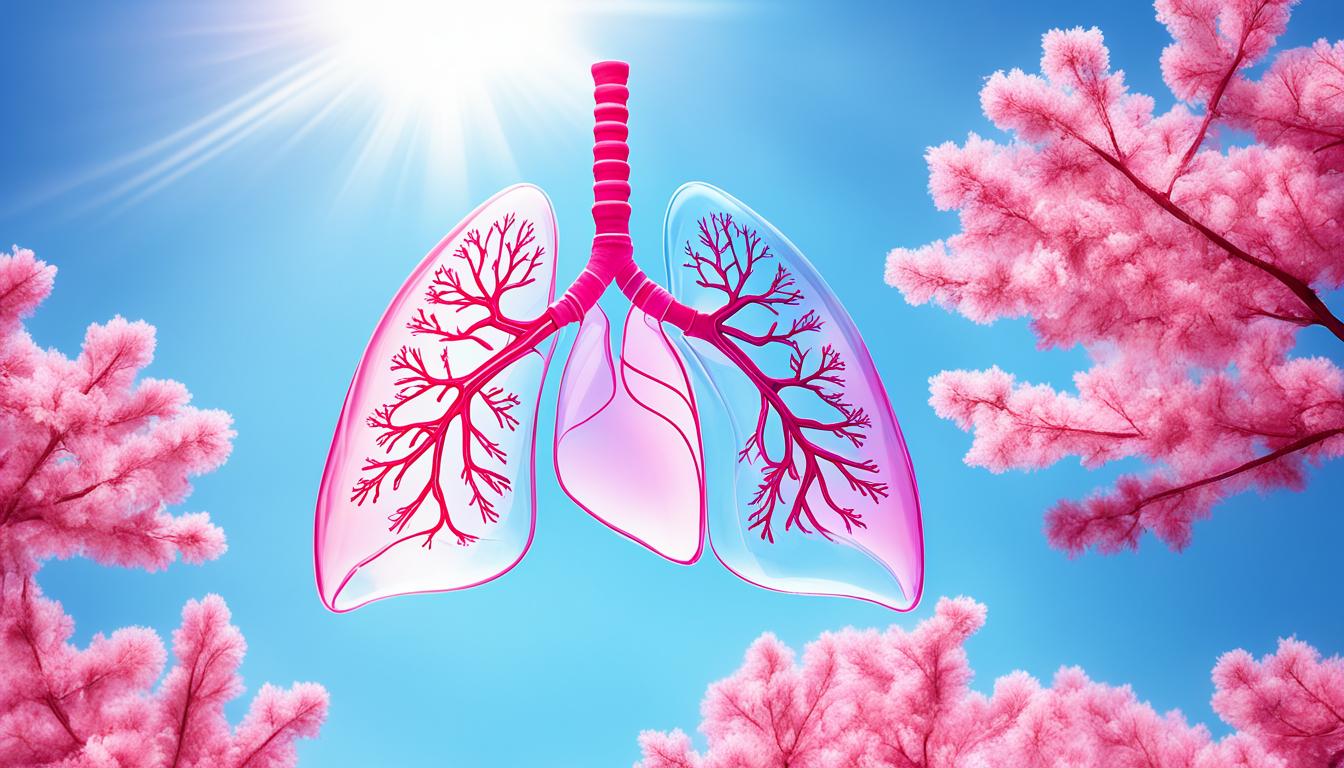Interstitial lung disease (ILD) is a group of lung problems. These problems cause inflammation and scarring in the lung tissue. Conditions like idiopathic pulmonary fibrosis (IPF) and interstitial pneumonia fall under ILD. The common signs of ILD are dry cough, feeling out of breath, tiredness, chest pain, and loss of weight for no known reason. ILD can happen because of autoimmunity, some medications, infections, and things in the environment. Currently, health care experts treat ILD to make the symptoms better and slow down how the disease affects the lungs. But, using stem cells to treat ILD could mean a better quality of life for patients.
Key Takeaways:
- Interstitial lung disease (ILD) is a group of lung disorders characterized by inflammation and scarring of the lung tissue.
- Main symptoms of ILD include dry cough, shortness of breath, fatigue, chest discomfort, and unexplained weight loss.
- Causes of ILD include autoimmune diseases, medication side effects, infections, and environmental exposures.
- Treatment options for ILD focus on symptom management and slowing disease progression.
- Stem cell therapy is a promising treatment option for ILD that aims to improve quality of life.
Note: Please ensure that the image link is correctly inserted into the
Understanding Interstitial Lung Disease
Interstitial lung disease (ILD) is a group of lung disorders. They are marked by inflamed and scarred tissue around the air sacs in the lungs. This scarring thickens and stiffens lung tissue. It causes reduced lung function and breathing difficulties. ILD includes conditions like idiopathic pulmonary fibrosis (IPF) and interstitial pneumonia.
Common ILD symptoms are dry cough, shortness of breath, and fatigue. People with ILD can feel chest discomfort, lose weight, and their skin might turn blue. Understanding the causes and risks of ILD is crucial. This helps in improving treatment and the quality of life for those affected.
Causes and Risk Factors
ILD can be caused by many things, from autoimmune diseases to certain medications. Infections, allergies (hypersensitivity pneumonitis), and genetic factors also play a role. People with certain autoimmune diseases are more at risk for ILD. These diseases include rheumatoid arthritis, systemic sclerosis, and lupus.
Workplace and environmental exposures to substances like asbestos or metal dust can lead to lung scarring. Identifying the cause of ILD is key to its treatment. Early intervention can help slow down the disease and improve life outcomes.
Diagnosis and Treatment
Diagnosing ILD involves reviewing medical history, physical exams, and tests like X-rays. In some cases, a lung biopsy is needed for a definite diagnosis. This helps determine the best treatment plan.
Treating ILD aims to manage symptoms and halt the disease’s progress. Medications such as corticosteroids and immunosuppressants are often prescribed. For severe cases, antifibrotic agents can be used. Pulmonary rehab and oxygen therapy are supportive treatments that enhance quality of life.
New treatments like stem cell therapy are offering hope for ILD patients. Mesenchymal stem cells have anti-inflammatory and tissue-repair properties. They’re being explored for ILD treatment. Umbilical cord-derived stem cells may also benefit ILD care.
Stem Cell Therapy for Interstitial Lung Disease
Stem cell therapy is changing how we treat interstitial lung disease (ILD). It uses mesenchymal stem cells (MSCs) to help fight ILD. MSCs reduce lung inflammation, help repair lung tissue, and balance the immune system. This shows promise in managing ILD and making life better for patients.
MSCs can decrease lung inflammation, slow the disease, and help repair tissue. Stem cells from umbilical cords are being used to heal lung damage from ILD. This treatment aims to ease breathing problems, boost energy, and improve health overall.
Places like the Plexus Neuro Center in Bangalore, India, lead in providing this treatment. But, a timely and accurate diagnosis, early treatment, and teamwork by experts are key. With proper care, stem cell therapy brings hope as a new ILD treatment around the world.
FAQ
Q: What are the main symptoms of interstitial lung disease (ILD)?
A: ILD can make you have a dry cough and feel short of breath often. You might also feel very tired. Chest pain, and losing weight without trying, are other signs.
Q: What causes interstitial lung disease (ILD)?
A: There are a few causes of ILD. They include autoimmune diseases and some medications. Infections, a condition called hypersensitivity pneumonitis, and a family history of lung disease can also play a role. Exposure to certain toxins is another big factor.
Q: Can stem cell therapy treat interstitial lung disease (ILD)?
A: Stem cell therapy has offered hope in ILD treatment. It works by lessening inflammation and aiding in repairing the lungs. This may slow down the disease.
Q: What types of stem cells are used in ILD treatment?
A: In the fight against ILD, specialists use mesenchymal stem cells (MSCs). These are best known for fighting inflammation and helping repair tissues. They also use stem cells from umbilical cords.
Q: How does stem cell therapy improve the quality of life for ILD patients?
A: Stem cell therapy’s goal is to make life better for ILD patients. It helps by making them less short of breath and less tired. This could mean more energy and feeling better in general.
Q: Where can I find specialized centers offering stem cell therapy for ILD?
A: If you’re looking for a place specializing in ILD stem cell therapy, check out Plexus Neuro Center in Bangalore, India. They offer treatment that might help.

